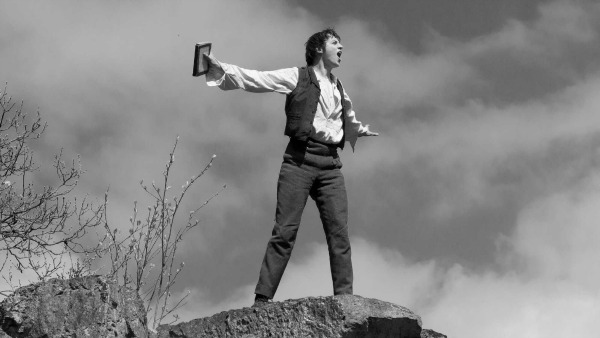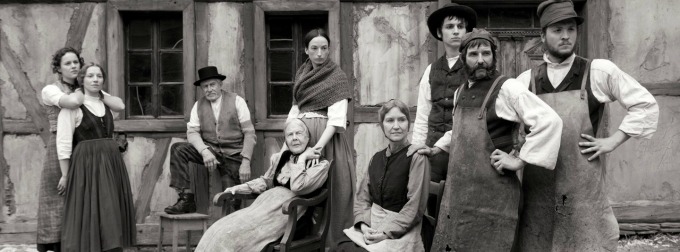The German word ‘heimat’ has no exact equivalent in English. More than just ‘homeland’, its root system of associations and connotations feeds a rather indistinct. but powerful, psychological creature – a complex of feelings about personal and national identity and purpose. It can conjure a sense of warmth and safety; it can be appropriated for insidious and malign purposes.
German director Edgar Reitz has spent much of his life exploring the meaning of this word, through his magnum opus, the magnificent series of HEIMAT films. The first HEIMAT, broadcast on television in 1984, consisted of 11 feature length ‘episodes’, a staggering 15 hours and 12 minutes, covering the period 1919 to 1982. In the UK it was a major television event, shown over 11 consecutive nights. Its story focused on the generations of the Simon family in the fictional village of Schabbach. It was idiosyncratic – filmed in scenes switching seemingly at random between colour and black and white – and had a staggering imaginative ambition, as much novelistic as cinematic.
The second HEIMAT, screened in 1992 (13 episodes, over 25 hours). Covering the 1960s, the series concentrated on the young Helmut Simon, leaving Schabbach to attend university and the exciting world of avant-garde music (much as Reitz himself did, only in his case it was to follow his filmmaking ambitions). The third HEIMAT, screened in 2004 (6 parts, almost 9 hours) and dealt with Germany in transition, pre and post the fall of the Berlin Wall.
This latest film, the title of which translates from the German as The Other Heimat but is released in the UK as HOME FROM HOME, goes back in time to before the first HEIMAT. It again focuses on the Simon family in the village of Schabbach. However this time in the mid 19th century, when families were struggling with dire poverty and authoritarian rule. It is a stand alone film, but the themes and characters from the previous films haunt every frame.
For instance, the need to escape the confines of the village, so strong a theme in HEIMAT one and two, is just as important in this installment. The young Jakob, like Hermann before, is the dreamer of the family, his head always buried in a book, longing to escape to exotic locations. His father castigates him for being lazy, while his mother looks on him as her favourite. The parallels to the mother/son relationship in HEIMAT 1, and the tension between escape from home and the irresistible urge to return, is underlined by the fact that the same actress (Marita Breuer) plays the mother in both films. In HOME FROM HOME apparent escape is available to those who accept the offer of a new life in Brazil, thanks to the Portuguese emperor who is looking for Germans to emigrate and colonise the country.
The fluid and elegant camera movements transform the sense of realism into moments of understated poetic flourish.
The dreams and prospects of another, more prosperous life, remain over the horizon, as the film stays close to home. The black and white photography captures the hardship of life in brilliantly composed shots, so evocative of archive photography from later in the century. The fluid and elegant camera movements transform the sense of realism into moments of understated poetic flourish. Reitz always has an eye for the symbolic, and is one of the few directors who can bring melodrama to these scenes without cheapening them with undue sentiment or triteness. His use of occasional touches of colour, another potential pitfall, is handled perfectly. A wondrous moment when the ailing mother, Magarethe, is brought out onto the hills by her two sons to survey the beautiful scenery is a prime example. The camera begins in a static position, showing her head above a foreground of growing crop. Then, flying out over the landscape in a rush of emotion, it finally comes to rest on a frame filled by the crop, now with the tiny flowers delicately picked out in blue. In that simple, magical, yearning shot, so much is expressed.
Werner Herzog appears near the close in what turns out to be a brief, but key role. As so often in the Heimat fables, the outsider and/or returning prodigal, brings change and progress. In a nice touch, Edgar Reitz also plays a part and the two meet on screen. Here, then, are two major German directors; both of whom have fought against convention, and brought new ideas to German cinema; both of whom have been shaped and nourished by their native culture. In that meeting is encapsulated the whole of the HEIMAT project, Reitz’s monumental achievement — a work that both questions and celebrates the past and the present.
httpvh://youtu.be/o5AFlhyrylM


